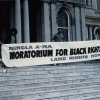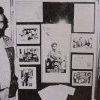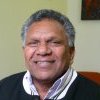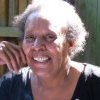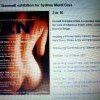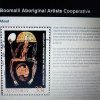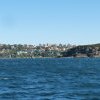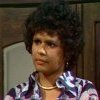1980s
1980
The Sydney Metropolitan Aboriginal Land Council in Redfern works for Land Rights and Aboriginal human rights. Prominent members are Alan Madden, Isobel Coe, Paul Coe, Sylvia Ingram, Milly Ingram, Esther Ingram, Norma Ingram, and Chicka Madden. (V7, ‘A ceremony to re-bury skeletal remains’) (V8, ‘The meaning of our land’) (V4, ‘These people made Redfern their home’)
The first Aboriginal Education Conference is held in the Carrington Hotel in Katoomba. This NSW Schools Commission conference invites only Aboriginal speakers such as Bob Morgan and Milly Butt (Ingram). Darrell Thorne, Tim Hornibrook and Julie Janson are the organisers. Many issues such as the beginning of the Aboriginal Education Consultative Group are workshopped.
Barry Thorne and Neil Thorne from Walgett become teachers and go on to long careers in education. Their brother, Darrell Thorne works with the Schools Commission recording interviews with prominent Aboriginal people in Sydney. The boys’ mother Thelma Thorne is a much loved Aboriginal Education Assistant.
Kevin Cook becomes the first Aboriginal General Secretary of the Aboriginal Co-operative Movement, whose best known achievement is Tranby College. Burnum Burnum visits Tranby to speak to students. One student is Joy Banfield. Politician Al Grasby supports funding for Tranby. Robert Stanley and Jack Beetson are prominent teachers.
1981
1982
Eora College is established in Regent St, Redfern as a vibrant, professional, community focused education centre for Aboriginal and Torres Strait Islander people. The college focuses on Art, Music, Film making, Theatre and literacy. Sydney Institute is the organization that runs Eora College. Story tellers such as Pauline Mc Leod teach at the college. Darryl Griffin is the Principal in 2011. Librarian Leanne Lovegrove works tirelessly at Eora. (V19, ‘Leanne Lovegrove’) (V34, ‘Education never ends’), (V55, ‘Redfern saved my life’)
1983
The NSW Land Rights Act becomes law. What becomes the Metropolitan Local Aboriginal Land council begins as the Redfern Local Aboriginal Land Council, whose primary objectives are determined by Section 51 of the New South Wales Aboriginal Land Rights Act 1983. The Act establishes 13 regional land councils, which will provide legal, economic and planning skills to acquire land in the interests of local Koori people. Isabel Flick is involved in early work. (V23 ‘Land is what we do’)
Michael Riley (film maker) comes to Leichhardt. At age 22 he has decided to come to Sydney out of boredom and to get away from the small-minded attitudes he finds out bush. If he had remained there, he reflects, he would have been straight on the dole and living in a housing commission house. Living nearby in Sydney are Linda Burney, and Lynnette Riley. While he has heard of some families who come to stay in Sydney but only remain a week, he decides to remain in Sydney for quite a few years before returning to Moree or Dubbo. His Aunty Rita lives in Leichhardt and has brought up her family there. He visits the Redfern Hotel from time to time but ‘it was very rough though’. He recalls that almost everybody went home (to rural NSW) before Christmas. (Plater 166).
With the disbandment of the University of Sydney Department of Adult Education, the Aboriginal Education Assistants Training program is relocated in the Department of Education, later the Faculty of Education, where it is known as the Aboriginal Education Centre. The director for many years is Rosemary Stack.
Gerry Bostock and Alec Morgan screen their documentary “Lousy Little Sixpence”. The film tells the story of five children, representatives for an entire generation, who were stolen from their families by the Australian government to turn them into unpaid servants for white families. The documentary uses old newsreels, archive film, interviews and photographs. It causes an outrage and becomes essential viewing in NSW Schools.
1984
1985
Housing in the Block has begun to deteriorate. For many families the houses are too small or too expensive to maintain. Drug pushing has become a major problem. The AHC is expected to take responsibility for the social and economic problems experienced by the tenants. It cannot cope with the problems facing the community, is struggling to survive as a company, and is in deep financial trouble. (Pitts p. 3/20) V36, ‘It’s time we ended this vicious cycle of racism’)
The first Chairperson of the Redfern (Later Metropolitan) Land Council is Sol Belear. At the first meeting membership forms are handed out to be filled out in which 50 members were needed. At first many people ask: ‘is it worth while? Is it tokenism?’ Other members include Jenny Munro, Ann Weldon, George Watts, Isabel Coe, and Christine Donnelly. (V8, ‘The meaning of our land’), V23 ‘Land is what we do’)
1986
A recent arrival to the inner-city is Lydia Miller. She recalls, ‘the first thing I noticed when I got here was everything was different, so many people and so many different ideas, you had to really develop a tolerance. It was so new you had to cope with that, you have to include that within your own frame of thinking.’ (Plater 167)
The Sarkissian Report finds that a choice of housing options be developed by the AHC and a major campaign begun to clean up the area including demolition of unsafe buildings. Sarkissian claims that the federal government and other agencies appear to be intent on destroying Aboriginal Redfern. However she concludes that ‘forced removal of people would have disastrous consequences, as the tragic chronicle of forced relocation to other communities has shown.’ A new plan is drawn up which includes communal living spaces but also private backyards with less emphasis on the idea of a common yard. (Pitts p. 3/29)
Boomali Aboriginal Artists Co-Operative is established in Chippendale. The Co-ordinator in 1990 is Brenda Croft. The founding members include Bronwyn Bancroft, Micheal Row, Jeffrey Samuels, Fiona Foley, Fernanda Martins, Tracey Moffatt, Euphemia Bostock, Averil Quail, Aaron Raymond Meeks, and Brenda Croft.
1987
The architectural historian Angela Pitts reports that the AHC’s office is acting as the first contact or first reference point for Aboriginal people, nation-wide, to find family and friends, or for the homeless transients to find shelter or to seek employment, medical and other services in Sydney. (Pitts p. 3/23)
1988
1989
David Gundy is accidentally killed by police in his home in Redfern while they search for another man. Enormous protests follow. (http://www.hreoc.gov.au/racial_discrimination/report/redfern_1990.html)
The Commonwealth Government announced it is closing the Cockatoo Island dockyards and the island will be sold. The 1600 workers employed by Australian National Industries, concerned about their jobs, begin a 12 week strike. The Metropolitan Local Aboriginal Land Council is also concerned about a number of significant sites on the island. The MLALC submitted a claim on the island disputing the Commonwealth's sovereign title on the island, arguing that Aboriginal people were the owners of the site prior to European settlement in 1788.
Lydia Miller and Justine Saunders, both actors, organise the first National Black Playwrights Conference. ‘We were in the company of Oodgeroo Noonuccal, Brian Syron, Bob Maza, Justine Saunders, Jack Davis, Maureen Watson, Jimmy Everett and They wanted a national Aboriginal theatre company and they wanted all the young people to organize it. Our generation was the Rhoda Roberts’, the Vivian Walkers' the Michael Johnson’s and the Suzanne Ingrams’, I can still see us now, sitting down with the lawyers: we’re these twenty-somethings and we’re going ‘Now what? OKay, so we’re writing a constitution! It was fantastic. This was the moment that I started assuming responsibility.” (Karbara [videorecording]: ‘The First Born: the First National Black Playwrights Conference/director/producer, Richard Guthrie.)
Tracey Moffatt makes a short award winning film ‘Night Cries’. Moffatt is an Australian artist who primarily uses photography and video. In Night Cries she draws ironic or romantic connotations in juxtaposition to the images and narratives, such as her use of footage of Jimmy Little singing ‘Royal Telephone’. (youtube.com)
The University of Sydney Faculty of Education establishes an Aboriginal Education Centre and, in 1990, the Centre receives substantial Commonwealth Government funding enabling it to provide a full range of support services. It also develops Aboriginal Studies programs, drawing on the resources of the Sydney College of Advanced Education, one of the University's amalgamating institutions.











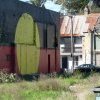

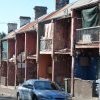

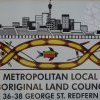
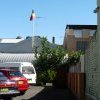
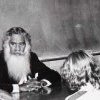


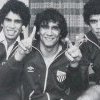
.thumbnail.JPG)
